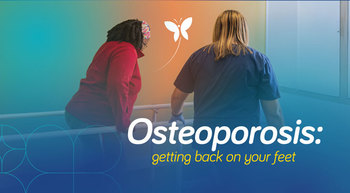
Mindfulness and relaxation practices at home
by Melissa Meyer Schoeman
Occupational Therapist
Intentional living during the CoVid-19 Lockdown
During the national lockdown, we are faced with a lot of new feelings and challenges. The idea of spending time at home might have been a wonderful prospect initially, but as the days go by we often find that the reality plays out a bit differently – relationships become strained by lack of space, children start to feel demanding and we start feeling a little bit stir crazy, anxious and restless
Nurture Health’s vision is to enable you to live a satisfying life, even during times of change and difficulty. This means finding balance in all the dimensions of wellness: Physically, emotionally, intellectually, spiritually, financially, socially and environmentally.
Here are some easy but important guidelines to help maintain balance in your life by employing relaxation and mindfulness techniques in your home environment.
We are all aware of passive relaxation: Watching television, listening to music, lounging on the couch or using social media as a distraction. For many of us it’s been our only form of relaxation yet practising active relaxation has important health and wellness benefits and will make you feel more productive and purposeful.
Try some of these active relaxation activities to stay stimulated, yet relaxed, while confined to your home:
- Read a book or listen to a podcast
- Adult colouring (You can find many resources online)
- Exercise videos on YouTube (Try Pilates or Yoga for beginners)
- Going for a walk in your garden if possible
- Keeping a journal
- Getting creative (You can use recycled waste material to make something at home)
- Make a vision board using magazines and paper
- Bake or cook something delicious
- Schedule time to worry instead of worrying subconsciously the whole day. Take 10 minutes, write down your concerns, acknowledge them and move on.

Don’t focus too much on being productive, relaxation is about being present and enjoying the activity at hand, so make sure you schedule time for it in between your responsibilities and to-do list.
Mindfulness is another technique you can try.
In short, mindfulness can be defined as a state of awareness and a state of seeking internal calm. This can be very helpful if you are feeling overwhelmed.
There are two types of mindfulness: informal and formal practices. You might have been practising informal mindfulness without realising it. Listening to music or taking a long bath and using that time to reach a state of calm is a great example of informal mindfulness. Formal mindfulness is the practice of meditation.
Basic Meditation boils down to 3 easy steps: You sit with your eyes closed, focusing on your breathing going in and out of your body, while gently trying not to focus on overwhelming thoughts or distractions around you, until you feel an internal shift, an internal space of peaceful tranquillity opening up.
Historically mindfulness was used in religious practices, but it has been used as a treatment in mental health for many years now.
Try downloading an application like “Calm” on your phone for free guided meditations More information on the neurobiological workings of mindfulness can be found here.
There are many activities you can do with your children, or alone, whatever you need to fill your emotional cup. Embrace the ebb and flow of your feelings and thought during this lock down, while enjoying activities that enrich your life.





